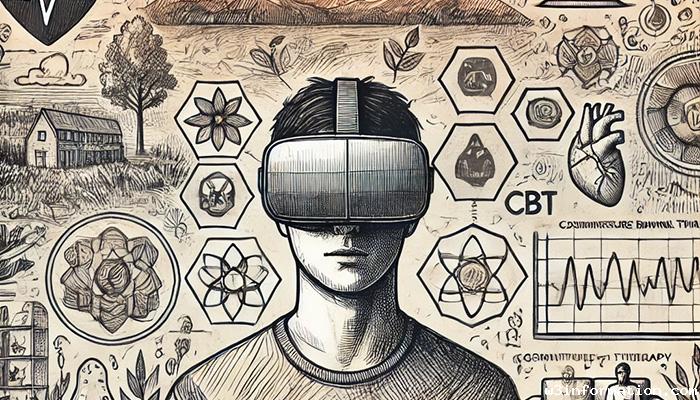Virtual Reality in Psychological Therapy: Transforming Mental Health Treatment
The field of psychological therapy now recognizes Virtual Reality (VR) as a powerful technology that provides new therapeutic approaches for mental health treatment. VR enables therapists to confront psychological issues through controlled simulated environments which traditional therapy lacks.
What is Virtual Reality Therapy?
Virtual Reality Therapy (VRT) combines VR technology with established therapeutic methods to treat patients. Patients put on a VR headset which takes them to a customized virtual environment designed according to their individual requirements. These virtual environments can mimic real-life situations while also exposing patients to their fears and offering peaceful spaces for relaxation and mindfulness practices.

How Does VR Therapy Work?
VRT operates using exposure therapy principles combined with cognitive-behavioral therapy techniques. For example:
Exposure Therapy: Through virtual reality environments people with specific fears like heights or flying can safely face their fears.
Anxiety and PTSD: Therapeutic settings allow veterans and trauma survivors to slowly experience distressing events which helps lower their emotional responses as time passes.
Mindfulness and Relaxation: Personalized virtual reality experiences enable users to practice mindfulness which results in decreased stress levels and better emotional regulation.
Benefits of VR in Psychological Therapy
Controlled Environment: Therapists adjust virtual scenarios according to individual patient requirements to maintain both safety and control during therapy sessions.
Increased Accessibility: Remote delivery of VR therapy allows people with mobility challenges to access mental health treatment.
Enhanced Engagement: VR's immersive capabilities help maintain patient focus and engagement which produces better therapeutic results.
Scalability: Multiple patients can use VR modules after development which lowers therapy session expenses and time requirements.
Applications of VR Therapy
Phobias: People can conquer their fears of public speaking and enclosed spaces or spiders by gradually exposing themselves to these situations.
PTSD: Therapeutic treatment of trauma through the controlled replication of distressing scenarios.
Social Anxiety: VR-generated social scenarios help develop self-assurance and adaptive responses in social settings.
Autism Spectrum Disorders: Teaching social skills through interactive simulations.
Chronic Pain Management: VR technology helps manage pain flare-ups by providing a distraction and changing how patients perceive their pain.
Challenges and Considerations
The capabilities VR holds for therapy are vast yet several challenges stand in the way.
Cost: Developing software and purchasing VR equipment represents a significant financial investment.
Accessibility: VR technology remains inaccessible to some patient populations.
Ethical Concerns: Patient safety alongside privacy and informed consent must always be prioritized when implementing immersive technology.
Adaptation Period: Both therapists and patients need time to familiarize themselves with new technology.
The Future of VR in Therapy
VR therapy has a bright future as current research and technological developments expand its therapeutic uses. AI-driven personalization combined with real-time data tracking and haptic feedback innovations holds the potential to improve therapeutic results. The growing affordability and accessibility of VR technology mean it will become a fundamental component of mainstream mental health care in the future.
Conclusion
The therapeutic field of psychology undergoes transformation through Virtual Reality which delivers effective treatment solutions that are immersive and widely accessible for multiple mental health disorders. Despite existing difficulties VR therapy remains an essential and attractive tool for modern psychological treatment due to its numerous advantages. The future potential of VR to revolutionize mental health care starts to become visible as technology progresses.
 Top 10 Comfort Foods to Try This Winter
Top 10 Comfort Foods to Try This Winter
 Top 10 Christmas Destinations Around the World
Top 10 Christmas Destinations Around the World
 Navigating Adolescence: Tips for Parents and Teens
Navigating Adolescence: Tips for Parents and Teens
 How to Start a DIY Craft Project on a Budget
How to Start a DIY Craft Project on a Budget
 How to Build Strong Family Bonds in the Digital Age
How to Build Strong Family Bonds in the Digital Age
 The Importance of Early Childhood Education
The Importance of Early Childhood Education